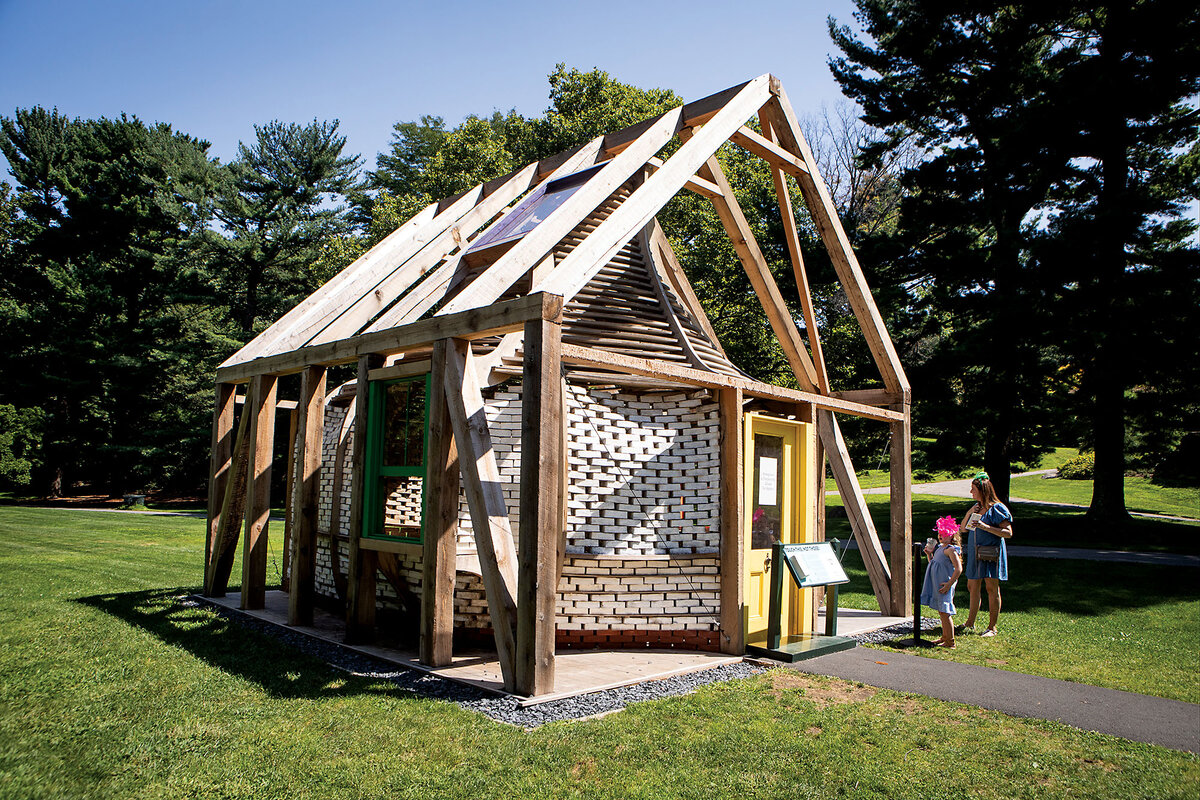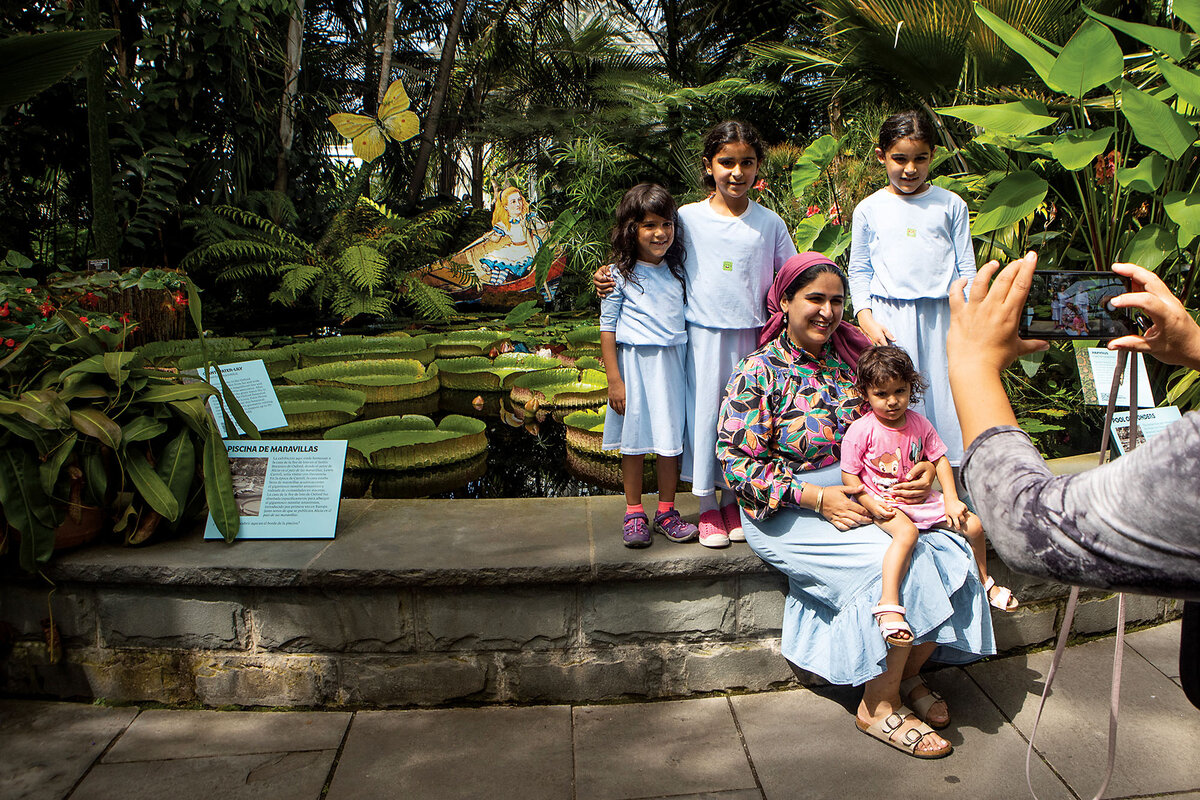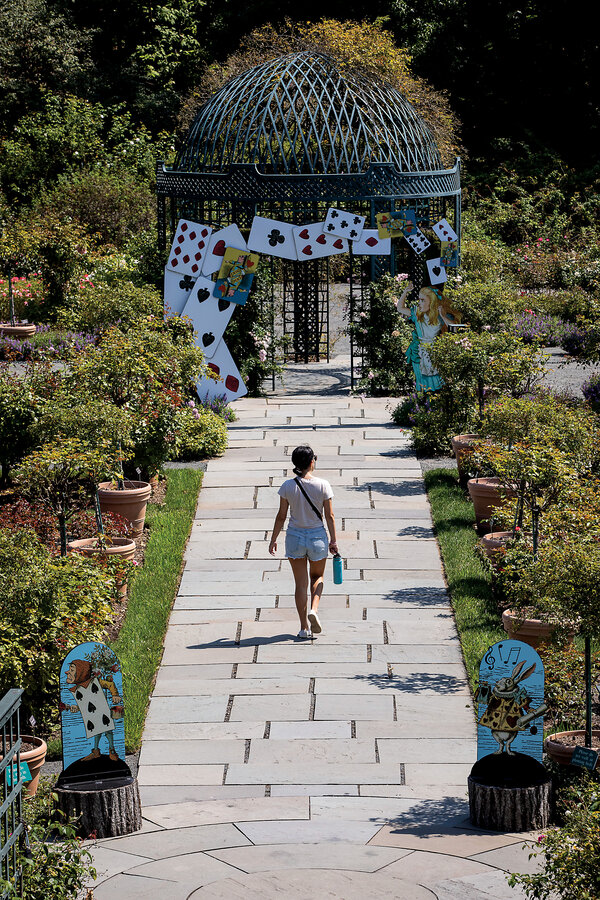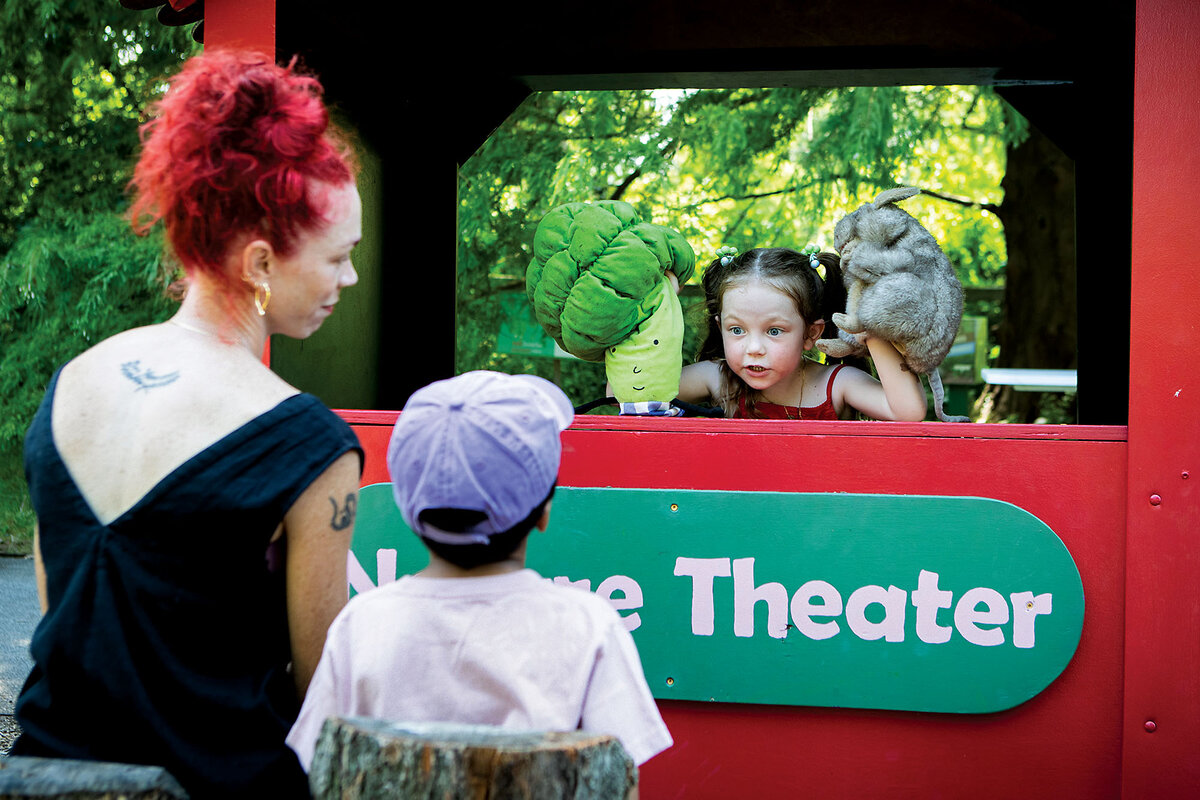Oh, hoppy day! Going down the White Rabbit hole at the New York Botanical Garden.
Loading...
| New York
Alice might have thought she found Wonderland, but she hadn’t, because she never made it to the New York Botanical Garden’s latest exhibit. Here, you don’t need to go down a rabbit hole to encounter a 12-foot-tall White Rabbit made entirely of plants ... or to stand beneath larger-than-life kinetic mushroom sculptures.
Installations inspired by Lewis Carroll’s beloved children’s books are sprinkled throughout the 250-acre garden as part of the “Wonderland: Curious Nature” exhibit, which runs through Oct. 27. Inside the garden’s conservatory are many plant specimens appropriate to Carroll’s Victorian era. Leaves of elephant ear plants, already large, can grow as big as umbrellas.
Diana Dil poses for a photo encircled by her little girls, all in blue except for the youngest in pink. Behind them, the conservatory pool is filled with giant water lilies. A multicolored Alice peeks out from the foliage in the distance. The family has excitedly visited the “Wonderland” exhibit twice.
“I want to live here,” says Ms. Dil.
For more visual storytelling that captures communities, traditions, and cultures around the globe, visit The World in Pictures.












